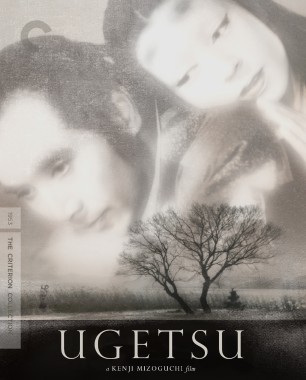The Life of Oharu

A peerless chronicler of the soul who specialized in supremely emotional, visually exquisite films about the circumstances of women in Japanese society, Kenji Mizoguchi had already been directing movies for decades when he made The Life of Oharu in 1952. But this epic portrait of an inexorable fall from grace, starring the astounding Kinuyo Tanaka as an imperial lady-in-waiting who gradually descends to street prostitution, was the movie that gained the director international attention, ushering in a new golden period for him.
BLU-RAY SPECIAL EDITION FEATURES
- New, restored high-definition digital film transfer, with uncompressed monaural soundtrack
- New audio commentary for the opening of the movie by film scholar Dudley Andrew
- Mizoguchi’s Art and the Demimonde, an illustrated audio essay featuring Andrew
- The Travels of Kinuyo Tanaka, a 2009 film by Koko Kajiyama documenting the actor’s 1949 goodwill tour of the United States
- New English subtitle translation
- PLUS: An essay by film scholar Gilberto Perez
New cover by Michael Boland
BLU-RAY SPECIAL EDITION FEATURES
- New, restored high-definition digital film transfer, with uncompressed monaural soundtrack
- New audio commentary for the opening of the movie by film scholar Dudley Andrew
- Mizoguchi’s Art and the Demimonde, an illustrated audio essay featuring Andrew
- The Travels of Kinuyo Tanaka, a 2009 film by Koko Kajiyama documenting the actor’s 1949 goodwill tour of the United States
- New English subtitle translation
- PLUS: An essay by film scholar Gilberto Perez
New cover by Michael Boland

Cast
- Kinuyo Tanaka
- Oharu
- Toshiro Mifune
- Katsunosuke
- Masao Shimizu
- Kikunokoji
- Tsukie Matsuura
- Tomo, Oharu’s mother
- Ichiro Sugai
- Shinzaemon, Oharu’s father
- Toshiaki Konoe
- Lord Matsudaira
- Hisako Yamane
- Lady Matsudaira
- Daisuke Kato
- Tasaburo Hishiya
- Yuriko Hamada
- Otsubone Yoshioka
- Komako Hara
- Ostubone Kuzui
- Kikue Mouri
- Old nun Myokai
- Haruyo Ichikawa
- Lady-in-waiting Iwabashi
- Kyoko Kusajima
- Lady-in-waiting Sodegaki
- Eitarô Shindô
- Kahei Sasaya
- Sadako Sawamura
- Owasa, Sasaya’s wife
- Akira Ooizumi
- Bunkichi, Sasaya’s employee
- Eijiro Yanagi
- Counterfeiter
- Jukichi Uno
- Yakichi Ogiya, Oharu’s husband
Credits
- Director
- Kenji Mizoguchi
- Producer
- Hideo Koi
- Screenplay
- Yoshikata Yoda
- Based on the novel by
- Saikaku Ihara
- Story editor
- Kenji Mizoguchi
- Cinematography
- Yoshimi Hirano
- Production design
- Hiroshi Mizutani
- Edited by
- Toshio Goto
- Music
- Ichiro Saito
- Artistic and historical adviser
- Isamu Yoshii
A scene from The Life of Oharu

















